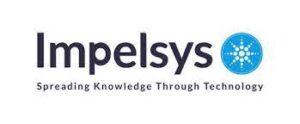The Power Of Data In eLearning
In today's digitally driven landscape, eLearning stands as a vital pillar of both modern education and corporate training. As more organizations turn to custom eLearning solutions and comprehensive Learning and Development solutions, the importance of analytics in enhancing eLearning performance continues to grow. By harnessing data-driven insights, educators and training professionals can fine-tune eLearning creation, monitor learner progress, and drive meaningful improvements in learning outcomes.
Analytics in eLearning refers to the collection, measurement, analysis, and reporting of data about learners and their interactions with digital content. This data can be harnessed to enhance every aspect of the learning experience—from Learning Management System (LMS) course creation to content delivery and learner engagement.
With the rise of learning management software, organizations now have access to a wealth of data. This includes metrics such as time spent on modules, quiz scores, completion rates, and behavioral patterns, including click paths and engagement heatmaps. When analyzed effectively, this data becomes a powerful tool for continuous improvement.
Optimizing Course Content With Analytics
One of the most impactful applications of analytics is in refining course content. By examining learner performance and feedback, Instructional Designers can identify which modules are most effective and which ones need improvement. For instance, if a significant number of learners are struggling with a particular quiz or abandoning a module midway, it may indicate that the content is too complex or not engaging enough.
Custom eLearning development teams can use these insights to redesign content, incorporate multimedia elements, or break down complex topics into more digestible segments. This iterative approach ensures that the content remains relevant, engaging, and aligned with learners' needs.
Tracking Learner Progress And Engagement
Analytics also plays a crucial role in monitoring learner progress. Through learning management software, educators can track individual and group performance in real time. This enables timely interventions, such as offering additional resources to struggling learners or providing advanced materials to high-performing students.
Moreover, engagement analytics—such as time spent on tasks, participation in discussions, and frequency of logins—can help identify learners who may be at risk of falling behind. By proactively addressing these issues, organizations can foster a more supportive and effective learning environment.
Enhancing Learning Outcomes
Ultimately, the goal of any eLearning initiative is to improve learning outcomes. Analytics enables organizations to measure the effectiveness of their training programs against Key Performance Indicators (KPIs). These might include knowledge retention rates, application of skills on the job, or improvements in employee performance.
By aligning analytics with business objectives, organizations can ensure that their eLearning solutions deliver tangible value. For example, a company might track how a compliance training program impacts audit results or how a sales training module influences revenue growth.
Personalizing The Learning Experience
Another significant advantage of analytics is the ability to personalize learning. Just as streaming services recommend content based on user behavior, custom eLearning solutions can adapt to individual learning styles and preferences. This might involve offering different content formats (videos, infographics, text), adjusting the difficulty level, or suggesting supplementary materials.
Personalized learning not only boosts engagement but also enhances knowledge retention and learner satisfaction. It transforms the traditional one-size-fits-all approach into a dynamic, learner-centric model.
Integrating Data In eLearning Analytics With Tools
To fully leverage analytics, it's essential to integrate it seamlessly with your eLearning creation tools and platforms. Many modern learning management software solutions come equipped with built-in analytics dashboards. These tools provide visualizations and reports that make it easy to interpret data and make informed decisions.
Additionally, integrating analytics with eBook conversion tools can provide insights into how learners interact with digital reading materials. For instance, tracking which sections are most frequently highlighted or bookmarked can inform future content development.
The Future Of Data-Driven Learning
As technology continues to evolve, the role of analytics in eLearning will only grow. Emerging technologies like Artificial Intelligence and Machine Learning are poised to take analytics to the next level, enabling predictive insights and automated content recommendations.
Organizations that embrace these innovations will be better positioned to deliver impactful, efficient, and engaging learning experiences. By investing in custom eLearning development and robust analytics capabilities, they can stay ahead of the curve and drive continuous improvement in their training programs.
Conclusion: Data In eLearning
Incorporating analytics into your eLearning strategy is no longer optional—it's essential. From optimizing content and tracking progress to personalizing learning and improving outcomes, data-driven insights are the key to unlocking the full potential of your Learning and Development solutions. Whether you're just starting with LMS course creation or looking to enhance your existing eLearning solutions, embracing analytics will ensure your programs are not only effective but also future-ready.








